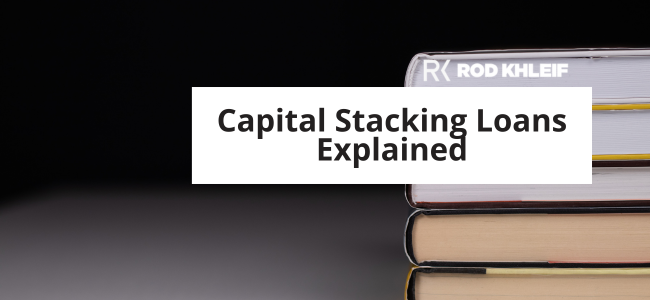Capitalization rates, commonly called cap rates, are a crucial metric for evaluating potential investment opportunities. By understanding them, investors can decide which properties to pursue and identify undervalued deals that align with their risk tolerance and investment goals.
In this article, we’ll explore the cap rates, providing a broad overview of their significance, calculation methods, and practical applications in property valuation.
Understanding Cap Rates
Capitalization rates are a universal benchmark for comparing investment opportunities across different property types and markets. Simply put, a cap rate represents the annual return on investment (ROI) a property generates based on its current market value.
Importance of Cap Rates in Real Estate Investments
Cap rates provide a quick and effective assessment of a property’s investment potential. Investors can compare properties across different locations, asset classes, and investment objectives by analyzing cap rates.
Relationship Between Property Value and Cap Rates
A higher cap rate generally indicates a higher potential return on investment. It also suggests a higher risk associated with the property. A lower cap rate implies a lower expected return but may carry less risk.
However, it’s essential to recognize that cap rates are not solely determined by property value. They also reflect the property’s location, market conditions, occupancy rates, and potential for future growth.
Factors Influencing Cap Rates
Understanding the factors influencing cap rates is essential for making informed investment decisions and identifying undervalued deals. By understanding their interplays, investors can optimize their returns.
Market Conditions
Investors are willing to pay more for properties in a rising market, driving down cap rates. Investors are more cautious in a declining market, demanding higher cap rates to compensate for the increased risk.
Property Location
Properties in high-demand, desirable locations tend to command lower cap rates, reflecting the high potential returns and lower risk associated with these assets. Properties in less sought-after areas may carry higher cap rates to compensate for the lower anticipated income and increased risk of vacancy or tenant defaults.
Asset Class
Properties like office buildings, considered more stable and less susceptible to market fluctuations, tend to exhibit lower cap rates compared to more volatile asset classes like retail properties or single-family homes. This is because investors require a lower return on a more stable asset.
Property Type
For instance, Class A office buildings, typically newer, well-maintained, and located in prime areas, carry lower cap rates than Class B or Class C office buildings. This differentiation reflects the varying levels of income stability, tenant quality, and long-term investment potential among different property types.
Economic Factors
When interest rates rise, the cost of borrowing increases, making it more expensive for investors to acquire properties. This, in turn, pushes cap rates to compensate for the higher financing costs. Likewise, periods of high inflation or economic uncertainty can lead to higher cap rates as investors demand a premium to compensate for the increased risk of asset depreciation.
Cap Rate Calculator
Understanding the rate’s fundamentals is paramount for any real estate investor. It’s expressed as a percentage and is calculated using the following cap rate formula:
Cap Rate = NOI / Property Value
- NOI (Net Operating Income) is the annual income generated by a property after deducting all operating expenses, such as property taxes, insurance, maintenance, and management fees.
- The Property Value is The current market value of the property, which is the price it would likely sell for today.
Example
To better figure out cap rate application, see the following examples:
- Scenario 1: Property A has an NOI of $100,000 and a market value of $2 million. The cap rate would be 5%.
- Scenario 2: Property B has an NOI of $75,000 and a market value of $1.5 million. The cap rate for Property B would be 5%.
- Scenario 3: Property C has an NOI of $80,000 and a market value of $1.2 million. The cap rate for Property C would be 6.67%.
These examples show that the cap rate can vary significantly across different properties, even within the same market. This highlights the importance of conducting thorough due diligence and comparing cap rates across comparable properties to identify undervalued opportunities.
Analyzing Property Valuations
Capitalization rates are a crucial metric used in real estate investing to assess the relative value of properties. They provide a standardized way to compare investment opportunities’ potential returns and risks.
Cap Rates as a Measure of Risk and Return
Lower cap rates are often associated with properties in stable, high-demand areas with solid income potential. In comparison, higher cap rates may signal properties in less developed or riskier markets.
Comparing Cap Rates in the Market
To effectively analyze home valuation, comparing cap rates against those of similar properties in the same market is essential. If a property’s cap rate falls significantly below the prevailing market average, it may indicate an undervalued opportunity. A cap rate markedly higher than the market suggests a riskier investment proposition.
Trends in Cap Rate Movement
Observing trends in cap rate movement over time can provide valuable insights into the overall health and direction of the real estate market. Rising cap rates generally indicate that investors are becoming more cautious and demanding higher returns while falling cap rates suggest that investors are more confident in the market and willing to accept lower returns.
Tracking cap rate trends across property types and geographic regions can help investors anticipate potential opportunities or risks. For instance, if cap rates for industrial properties are rising in a particular area, it may signal increased demand and potential for future rental growth. If cap rates for retail properties are falling, it may reflect concerns about retail trends and potential vacancy risk.
Strategies to Improve Cap Rates
As a real estate investor, you can actively employ strategic measures to enhance your investment properties, ultimately boosting their cap rates. These strategies can be categorized into three primary areas.
Enhancing Property Income
One of the fundamental ways to boost cap rates is by increasing the property’s income potential. This involves implementing strategic measures to maximize rental income, exploring alternative revenue streams, and optimizing overall property performance. For instance, consider revisiting your leasing strategy to ensure optimal rent rates align with market trends. Additionally, explore opportunities to add value through amenities or services that can command higher rents..
Controlling Operating Expenses
By scrutinizing and optimizing costs associated with property management, maintenance, and utilities, investors can ensure that a higher proportion of the property’s income contributes to the net operating income. Implementing cost-cutting measures without compromising property quality is essential for achieving a favorable cap rate.
Renovation and Property Improvements
Strategic renovations and property improvements can significantly impact cap rates by enhancing the property’s market value and income-generating potential. Identifying improvement areas, such as upgrading outdated facilities, improving energy efficiency, or enhancing curb appeal, can result in increased property value and higher rental income. Carefully planned renovations can attract higher-paying tenants and position the property as a more attractive investment in the eyes of potential buyers.
Identifying Undervalued Deals
One of the keys to success lies in identifying undervalued deals. This means finding properties that offer a higher return on investment than comparable properties in the same market. Cap rates play an important role in this process, enabling the evaluation of potential investments and uncovering hidden gems.
Recognizing Opportunities in the Market
The first step in identifying undervalued deals is to develop a strong understanding of the market. This involves analyzing trends, identifying areas with strong rental demand, and understanding the current pricing landscape. You can spot discrepancies between property values and their potential by staying up-to-date with market conditions.
Given that a property is priced below the average cap rate for similar properties in the area, it could indicate that it is undervalued. This could be due to factors such as a lack of recent renovations, a temporary downturn in the market, or hidden opportunities for improvement.
Using Cap Rates to Spot Potential Bargains
Cap rates provide a standardized metric for comparing properties across different types and locations. By comparing the cap rate of a potential investment to the average cap rate for similar properties, you can assess its potential for profitability. Here are some useful tips:
- Compare cap rates within a market: Compare the cap rates of similar properties in the same area to identify anomalies. A property with a significantly lower cap rate may be undervalued due to factors like deferred maintenance, tenant issues, or outdated features.
- Consider historical cap rates: Analyze the historical cap rates for similar properties in the area to understand the market’s expectations. If a property’s current cap rate is significantly lower than historical averages, it may indicate an undervalued opportunity.
- Factor in potential upside: When evaluating a property, consider the potential for future appreciation or rental growth. If the property has the potential to increase its NOI, its cap rate will likely rise, enhancing the long-term value proposition.
Tips for Effective Cap Rate Management
Effective cap rate management is essential to make informed investment decisions and maximize returns. Here are two key strategies to incorporate into your cap rate analysis.
Regular Market Analysis
Regularly monitor cap rates for similar properties in your target market. This will help you identify anomalies and assess whether a property’s cap rate falls within the expected range. Observe how cap rates have fluctuated over time and understand the factors influencing these changes. This knowledge will enable you to judge the property’s value and investment potential.
Networking and Industry Relationships
Networking with brokers, appraisers, and other investors provides access to valuable information and insights. Engage in discussions, gather market data, and seek expert advice to broaden your understanding of cap rates and the broader real estate landscape. Attend industry events, participate in online forums, and establish connections with like-minded individuals to enhance your knowledge and network.
Risks and Limitations of Cap Rates
Cap rates provide valuable insights into property valuations, providing a standardized metric for comparing their relative value. However, it’s essential to recognize the limitations of cap rates and the potential risks associated with their sole reliance.
External Factors Influencing Cap Rates
It’s essential to keep in mind that cap rates are not static, and they fluctuate in response to various external factors, including:
- Economic Conditions: A stable economy with low-interest rates generally leads to lower Cap Rates, as investors are willing to accept a lower yield due to the perceived reduced risk. An economic downturn with rising interest rates may push cap rates higher, reflecting increased risk aversion among investors.
- Supply and Demand Dynamics: If a property surplus exists in a given market, cap rates may trend lower as investors bid down prices to compete for tenants. A shortage of properties may drive Cap Rates higher as investors compete for limited supply.
- Property Type and Location: Different property types and locations often have distinct cap rates, reflecting the unique characteristics of each market segment. For instance, apartments in high-demand urban centers typically command lower Cap Rates than single-family homes in suburban areas.
Market Volatility
Cap rates are sensitive to market fluctuations, making them less reliable in volatile periods. During periods of economic uncertainty, investors may become more risk-averse, leading to wider spreads in cap rates and making it more challenging to compare properties accurately.
Potential Pitfalls in Relying Solely on Cap Rates
Neglecting property-specific factors, such as management efficiency, tenant quality, and potential value-add opportunities, can lead to incomplete investment analyses. Cap rates focus on current income, but overlooking the potential for future appreciation or income growth can result in missed opportunities. Investors should consider the long-term prospects of the property beyond the immediate calculation.
Conclusion
Capitalization rates play a vital role in real estate investing by providing a standardized benchmark for comparing properties and deciphering their risk-return profiles. Investors can make informed investment decisions by considering the factors influencing cap rates and identifying undervalued deals that align with their risk tolerance and investment goals.
To effectively use cap rates, remember to conduct thorough due diligence, analyze market trends, and consider the property’s income potential, operating expenses, and potential for improvements. By incorporating cap rate analysis into your investment strategies, you can optimize the returns and achieve long-term success in the market.












